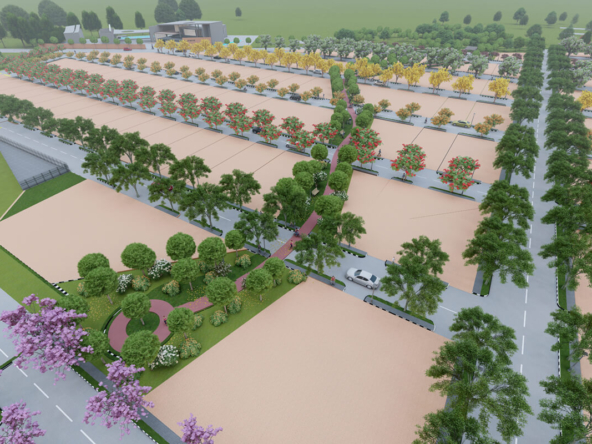The property market in India is dynamic and ever-evolving, influenced by various factors such as economic conditions, government policies, demographic trends, and investor sentiments. To stay ahead in the real estate game, it’s essential to unveil the latest property market trends. In this comprehensive analysis, we will explore the current trends shaping the property market in India. From factors affecting property prices to demand and supply dynamics, emerging investment opportunities, and the impact of government policies, this guide will provide you with valuable insights to make informed decisions for your real estate ventures. So, let’s delve into the trends!
Factors Affecting Property Prices
Understanding the factors that impact property prices is crucial for both buyers and investors. Here are some key factors influencing property prices in India:
- Location: Location plays a significant role in determining property prices. Prime locations with good connectivity, proximity to amenities, and developing infrastructure tend to command higher prices. Demand for properties in established and upcoming areas can drive up prices.
- Supply and Demand: The demand and supply dynamics of the real estate market have a direct impact on property prices. When demand exceeds supply, prices tend to rise. Conversely, an oversupply of properties can lead to price corrections or stagnation.
- Economic Factors: Economic conditions, such as GDP growth, inflation rates, and interest rates, can influence property prices. A robust economy, low inflation, and favorable interest rates generally stimulate demand and contribute to price appreciation.
- Government Policies: Government policies and regulations, such as changes in tax laws, affordable housing initiatives, and incentives for developers, can impact property prices. Policies that promote real estate investments or provide financial assistance to homebuyers can influence the demand-supply dynamics and prices.
- Infrastructure Development: Infrastructure projects, such as the construction of highways, metro lines, airports, and commercial hubs, can significantly impact property prices in the surrounding areas. Improved connectivity and the availability of amenities can attract buyers and investors, leading to price appreciation.
Demand and Supply Dynamics
The demand and supply dynamics in the property market have a direct correlation with property prices and investment opportunities. Let’s explore the current trends:
- Residential Properties: Demand for residential properties in India continues to remain strong, primarily driven by the growing urban population, changing lifestyles, and the desire for homeownership. Affordable housing segments and properties with modern amenities are witnessing increased demand.
- Commercial Properties: The demand for commercial properties, such as office spaces, retail outlets, and warehouses, is influenced by economic growth, business expansion, and the rise of e-commerce. Metro cities and emerging business hubs are witnessing significant demand for commercial spaces.
- Rental Market: The rental market in India is witnessing steady growth, fueled by the transient nature of the workforce and the preference for renting over buying. Factors such as job opportunities, educational institutions, and proximity to commercial centers influence rental demand and prices.
- Supply Challenges: While demand for properties remains strong, supply challenges persist in certain markets. Issues such as delays in project approvals, land acquisition hurdles, and liquidity constraints faced by developers can impact the supply of properties, leading to price fluctuations.
Emerging Investment Opportunities
The Indian property market offers several investment opportunities for buyers and investors. Here are some emerging trends to consider:
- Affordable Housing: The affordable housing segment is gaining traction, driven by government initiatives such as Pradhan Mantri Awas Yojana (PMAY) and interest subsidies. Investing in affordable housing projects can offer long-term returns and cater to the increasing demand for budget-friendly homes.
- Co-living and Student Housing: With the rise of the gig economy and a growing student population, co-living and student housing have emerged as lucrative investment options. Purpose-built co-living spaces and student accommodations can provide stable rental income and cater to the evolving needs of young professionals and students.
- Warehousing and Logistics: The rapid growth of e-commerce has fueled the demand for warehousing and logistics spaces. Investing in logistics parks and warehouses located strategically near major cities can offer attractive returns, considering the increasing need for efficient supply chain management.
- Smart Cities and Integrated Townships: The government’s Smart City mission and the development of integrated townships present investment opportunities in planned, technologically advanced urban spaces. These projects focus on sustainability, connectivity, and the integration of smart technologies, making them attractive options for investors.
Impact of Government Policies
Government policies and regulations significantly influence the property market in India. Here are some key policy measures and their impact:
- RERA: The Real Estate (Regulation and Development) Act, 2016 (RERA), has brought transparency and accountability to the real estate sector. The implementation of RERA has boosted buyer confidence, improved project delivery timelines, and enhanced the overall credibility of the industry.
- GST: The implementation of the Goods and Services Tax (GST) in 2017 has streamlined the taxation system for the real estate sector. The unified tax structure has eliminated multiple indirect taxes, simplifying transactions and reducing overall costs for homebuyers and developers.
- Affordable Housing Initiatives: The government’s focus on affordable housing through initiatives like PMAY and tax benefits for affordable homes has stimulated demand in this segment. These measures aim to address the housing needs of the economically weaker sections and the middle-income group.
- Infrastructure Development: The government’s emphasis on infrastructure development, such as the construction of highways, metro networks, and smart cities, has a direct impact on the property market. Improved connectivity and amenities in these areas drive property demand and prices.
In conclusion, unveiling the property market trends in India is essential for making informed decisions in the real estate sector. Factors such as location, supply and demand dynamics, economic conditions, government policies, and infrastructure development significantly influence property prices and investment opportunities. By staying updated on these trends, you can seize emerging opportunities, navigate market challenges, and maximize returns on your real estate ventures in India.
FAQs
Q1: Is it a good time to invest in the Indian property market?
A1: The decision to invest in the Indian property market depends on various factors such as your financial goals, risk appetite, and market conditions. Conduct thorough research, analyze market trends, and consult with real estate experts to make an informed investment decision.
Q2: Are there any tax benefits for investing in real estate in India?
A2: Yes, there are tax benefits available for real estate investments in India. These include deductions on home loan interest under Section 24(b) of the Income Tax Act, 1961, and deductions on principal repayment under Section 80C.
Q3: Which cities in India offer high growth potential in the property market?
A3: Several cities in India offer high growth potential in the property market. Metro cities like Mumbai, Delhi, Bengaluru, and Chennai are major real estate hubs. Additionally, emerging cities like Pune, Hyderabad, Ahmedabad, and Kochi are witnessing rapid development and investment opportunities.




